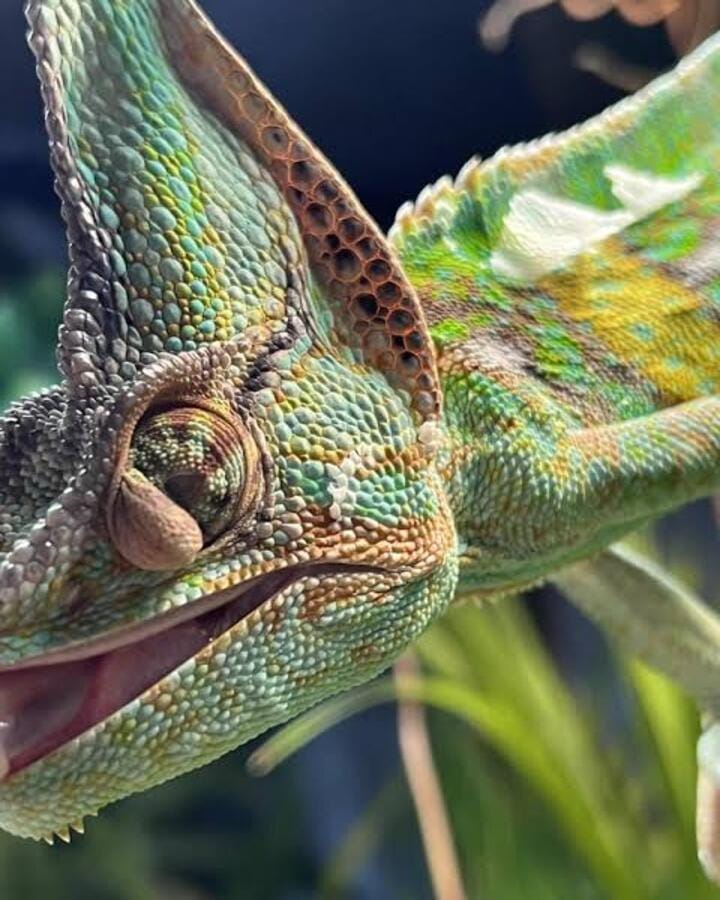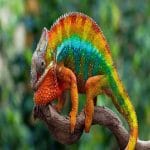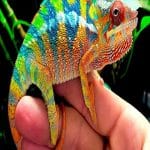
Image Credit – Hema
Among all the extraordinary abilities in the animal kingdom, few are as unique and intriguing as Chameleon Eyesight. These color-changing reptiles aren’t just known for their camouflage, but also for having one of the most advanced visual systems on the planet. A chameleon’s eyes can move independently, offer a panoramic field of view, and provide incredibly accurate depth perception—all key traits that aid in hunting, survival, and communication. In this blog, we explore how Chameleon Eyesight works, why it’s so unique, and what science tells us about this natural marvel.
Chameleon Eyesight: Nature’s Most Fascinating Vision System

The Anatomy of a Chameleon’s Eyes
Chameleons have eyes that are very different from most animals. Each eye is covered almost completely by fused eyelids, leaving only a tiny circular opening for the pupil. This structure allows chameleons to rotate their eyes nearly 180 degrees horizontally and 90 degrees vertically. The muscles surrounding the eyes are incredibly flexible, enabling independent eye movement—an ability that gives them a true 360-degree field of vision when both eyes are used.
Independent Eye Movement
One of the most astonishing features of Chameleon Eyesight is the ability to move each eye in a different direction. While one eye can be observing prey, the other can scan the surrounding area for predators. This gives them a huge advantage in the wild, as they can multitask visually like no other reptile.
When they focus on a target, both eyes can realign and focus forward, allowing binocular vision. This switching mechanism from monocular (independent) to binocular (combined) vision helps the chameleon calculate exact distances—crucial for their projectile tongue to strike with precision.
360-Degree Vision: A Built-in Surveillance System
With both eyes working together, chameleons enjoy an almost complete 360-degree panoramic view. This wide-angle vision allows them to stay alert and spot threats from any direction without moving their heads. Unlike many prey animals that rely on quick reflexes to escape, chameleons rely on early detection to stay still and avoid confrontation.
Color Perception and UV Vision
Chameleons also have excellent color vision, possibly better than humans. They can detect a wide spectrum of colors, including ultraviolet (UV) light, which plays a role in mating behavior and communication. UV markings, invisible to human eyes, may appear vivid to chameleons and help them distinguish between rivals, mates, and even threats.
Research has shown that chameleons have more cone cells in their retinas than many other reptiles, which supports their enhanced color detection. This trait is essential not only for camouflage but also for precise visual identification of prey like insects.
Hunting with Laser Precision
A chameleon’s tongue can stretch up to twice the length of its body, but it’s the Chameleon Eyesight that makes its strike successful. By realigning both eyes forward, the chameleon gains sharp depth perception, allowing it to judge exactly how far the prey is. Once the eyes are locked on, the tongue shoots out with lightning speed and deadly accuracy.
This visual-locking behavior takes only a fraction of a second and is an excellent example of how complex and effective their visual system truly is.
Adaptation and Evolution
Chameleon Eyesight is a result of millions of years of evolutionary refinement. These reptiles have adapted their vision to survive in diverse environments—from dense rainforests to arid deserts. Their unique eyesight helps them remain both predator and prey—blending into their surroundings while keeping watch from the shadows.
Chameleon Eyesight is not just a quirky trait—it’s a remarkable example of how evolution crafts specialized systems to fit unique survival needs. From their independent eye movement and panoramic vision to their superior depth perception and color sensitivity, chameleons continue to fascinate scientists and nature lovers alike.
Have you ever watched a chameleon hunt or move its eyes in two directions? Let us know in the comments below what surprised you the most about their vision!
Frequently Asked Questions
Why is Chameleon Eyesight so special?
Chameleon Eyesight allows for 360-degree vision, independent eye movement, and precise depth perception, making them elite hunters with exceptional awareness.
Can chameleons see in color?
Yes, chameleons have excellent color vision and can even see UV light. Their eyesight helps them detect prey, mates, and threats in complex environments.
How does Chameleon Eyesight help in hunting?
They align both eyes on the prey for accurate depth calculation, enabling them to launch their tongue with pinpoint precision.







